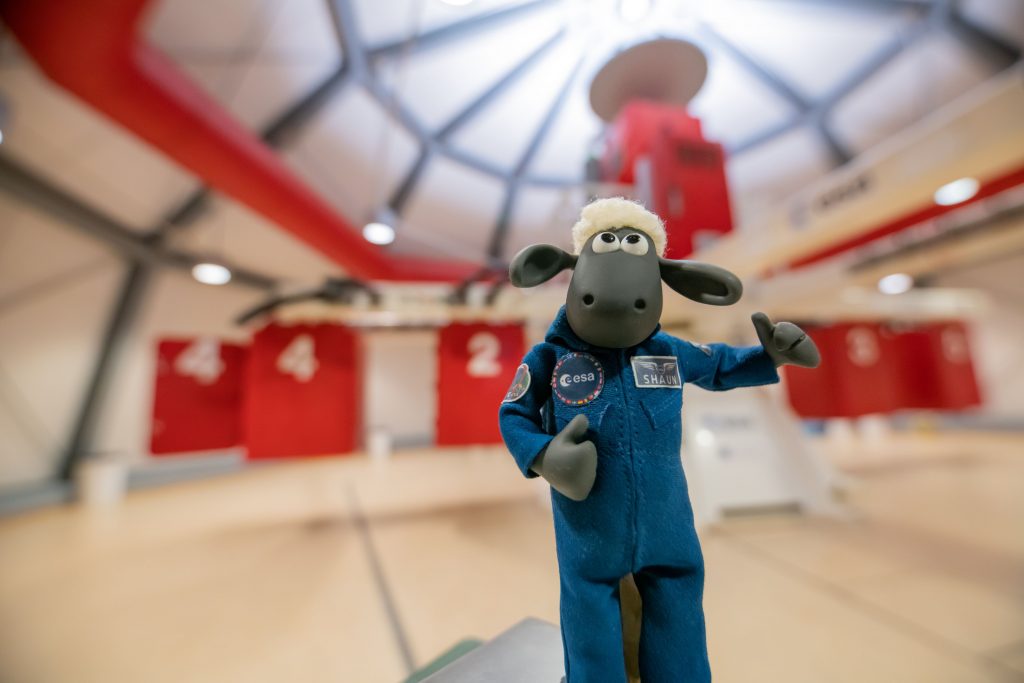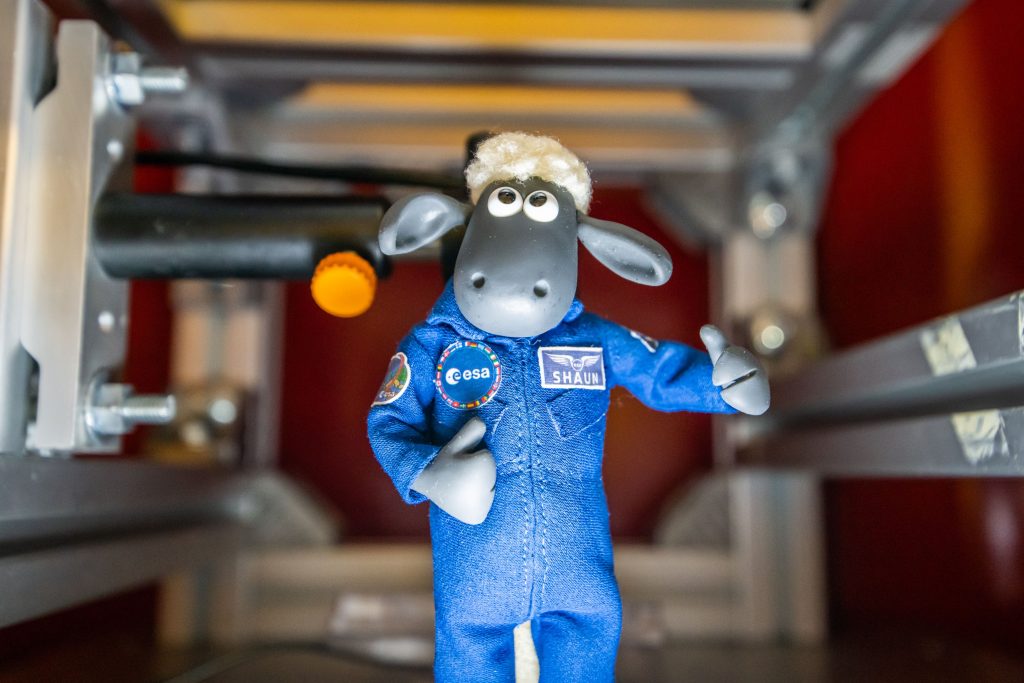The specially trained astronaut Shaun the Sheep has been assigned a seat on the Artemis I mission to the Moon. This series of ESA blog posts covers Shaun’s training and preparations leading up to launch.

An astronaut’s job sometimes weighs heavy on them: crews flying to and returning from space briefly endure high acceleration forces that make their bodies weigh over four times more than on Earth. Due to this, they have to endure some training to acclimatise to the high g-loads they might experience on their mission; something Shaun will definitely experience on his way to and from the moon.
The training helps the astronaut familiarise with the sensations of a normal ascent to space and re-entry back to Earth when the spacecraft is slowed down by the thicker layers of Earth’s atmosphere.
Shaun the Sheep got exclusive access to the Large Diameter Centrifuge based at ESA’s ESTEC technical centre in Noordwijk, the Netherlands. This spinning device is devoted to research that gives scientists access to high acceleration levels for minutes, days or even weeks on end.

The 8 m diameter centrifuge can operate at up to 20 g (that’s 20 times the acceleration due to gravity that we normally experience here on the ground!) with four gondolas able to accommodate 80 kg of payloads for six months non-stop.
Space ride training
Shaun the Sheep took a spin in this centrifuge to recreate the forces felt on launch and landing. He experienced peak loads of up to 8 g…wow!
Although the gondola has no windows, astronauts don’t have a sense of the rotation, but feel the pressure within their body.
During each spin and through the breaks, the astronaut’s vestibular system is shaken. This training is there to hopefully help them avoid any motion sickness during the ride in space.

 Automated Transfer Vehicle page
Automated Transfer Vehicle page ATV blog archive
ATV blog archive
Discussion: 2 comments
Do you have a date for the first European Astronaut stepping foot on the moon? Artemis 3 or Artemis 4?
Not yet, but stay tuned! 😉